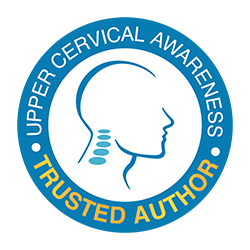7 Tests to Identify a Pinched Nerve | Upper Cervical Chiropractor in Mount Dora, FL
Thanks for joining us again, I’m Dr. Todd at Mountain Dora Family Chiropractic. Today I’m going to show you some tests in the neck and in the lower back to help determine and identify if you have a pinched nerve.
The Compression Test
Okay, so the first test we’re going to do is called a compression test. It’s kind of an overall test to see if you have got any irritation in the joints. So the way we’re going to do that is real simple, we’re going to extend up, and we’re going to tilt towards the affected side and rotate towards the affected side. So basically, we’re encroaching the space for the nerve. So with a healthy spine then you won’t have any symptoms. If you’ve got damage and inflammation, you know where the nerves pinch, you’re gonna know about it. Okay, so we’re going to start there with this test. If you have symptoms here that exacerbates your symptoms just stop, it’s a positive test and you may need further treatment.
The 3 Different Nerves
Now, if you’re not really noticing an exacerbation, the next step is to apply some light pressure straight down on top of your head to further push those joints together. To see again, if you’re getting bad shooting pain, increase in numbness and tingling, things like represent a positive compression test. Now, primarily, you’ve got three nerves that are going to be irritated coming from the neck. So you’re gonna have radial nerve, median nerve and ulnar nerve. Alright, so there are tests for each of those specific nerves. So I want to show you that the first one we’re going to do is the median nerve. All right. Now, the median nerve, if you’re having symptoms is primarily going to feel like either pain, numbness and tingling pins and needles. Usually it’s going to be from this inside edge of my ring finger over. We’ll get some over the tops of the fingers here and maybe half of that finger. So again, if you’re getting like half of that ring finger, you want to be thinking, well, that’s the median nerve.
The Median Nerve Test
So the test for that is, we’re going to put our arm straight out and we’re going to drop our hand down. Kind of extending the wrist again. So if you’re, if you’re getting exacerbation of symptoms here, you can stop there.
If you’re not getting an exacerbation, the next step to increase the intensity of the test is to lean away. So now we’re tethering, if you will, on the nerve. So again, if you’re getting an exacerbation of symptoms down the arm or hand that’s positive test for the median nerve.
The Ulnar Nerve Test
Okay, the next thing we will test for is the ulnar nerve. That is going to give you symptoms on this lateral side or outer side of this ring finger, on the pinky finger, and kind of this part of the palm of your hand. So you well feel it on the outer edge here and it’s kind of an odd test. It’s like when we used to be kids, you can goof around, and you know, you do these numbers. So that’s kind of what you’re gonna do, you’re gonna do the “A okay” sign on the affected side and we’re gonna flip my arm around like that. So you might feel an exacerbation there. Again, you can try to lean away your further tethering and stressing areas of the nerve and the foramen.
The Radial Nerve Test
The last one we want to do is test for the radial nerve. Now the radial nerve is at the top part of your hand and that’s where you primarily are going to have symptoms. The way we’re going to do that test is you’re gonna stand, then you’re going to turn your palm out like this, and flex your wrist again. If that movement exacerbates the symptoms or pain you can stop. The next step is to lean away again, further tethering that spine irritating that nerve. Okay, so that’d be a positive test for the radial nerve.
The Relief Test
Now, the last test we’re going to do is called the relief test. Maybe we should have started with this one because relief sounds good. Basically, if you relieve your symptoms, that’s a positive. What you’re gonna do is if you’re at home get a pillow or something like that in your lap. Then you want that arm to just rest really comfortably getting relaxed with no pressure on that arm. Then once we’re here, we’re just going to gently lean away. What we’re doing in this case with the arm totally relaxed like this, is we’re actually trying to open that joint space. Okay, so in other words, we’re making more room for the nerve to come through, and it can give us some relief. So if you feel a release of or decreasing of your symptoms, that’s a positive relief test. Okay, so those are some tests for what is called cervical radiculopathy or where you have pinched nerves in the neck with radiating pain coming down your extremity.
Lower Back Tests
The next two tests are for your lower back. So pinched nerve in your lower back, are also known as lumbar radiculopathy and sciatica. Everyone’s heard of sciatica. So it’s a pretty nasty, deep, sharp pain down in the buttock or back of the legs. So the first test is called the slump test. So you’re literally going to slump, just let your posture fall like this. So you’re really loading that lower back again, and if this exacerbates your symptoms, you should probably just stop there. Okay. And then the next step, I’m gonna stay slumped, then I’m gonna pull my leg straight up like that. So I’m now tethering the nerve that’s going down my leg. So that would be a positive slump test when it exacerbates your symptoms. The other test, which is real simple, is called a valsalva maneuver. That is simply taking a breath in, and then hold your breath and bear down kind of like you’re flexing your stomach. That’s going to increase what’s called intrathecal pressure within your spinal column. If you have a bulge or herniation, that is going to exacerbate your symptoms and you might get that zap of pain down the leg.
Hopefully you found this helpful in identifying pinched nerve symptoms. Schedule your nerve pain relief consultation today!



